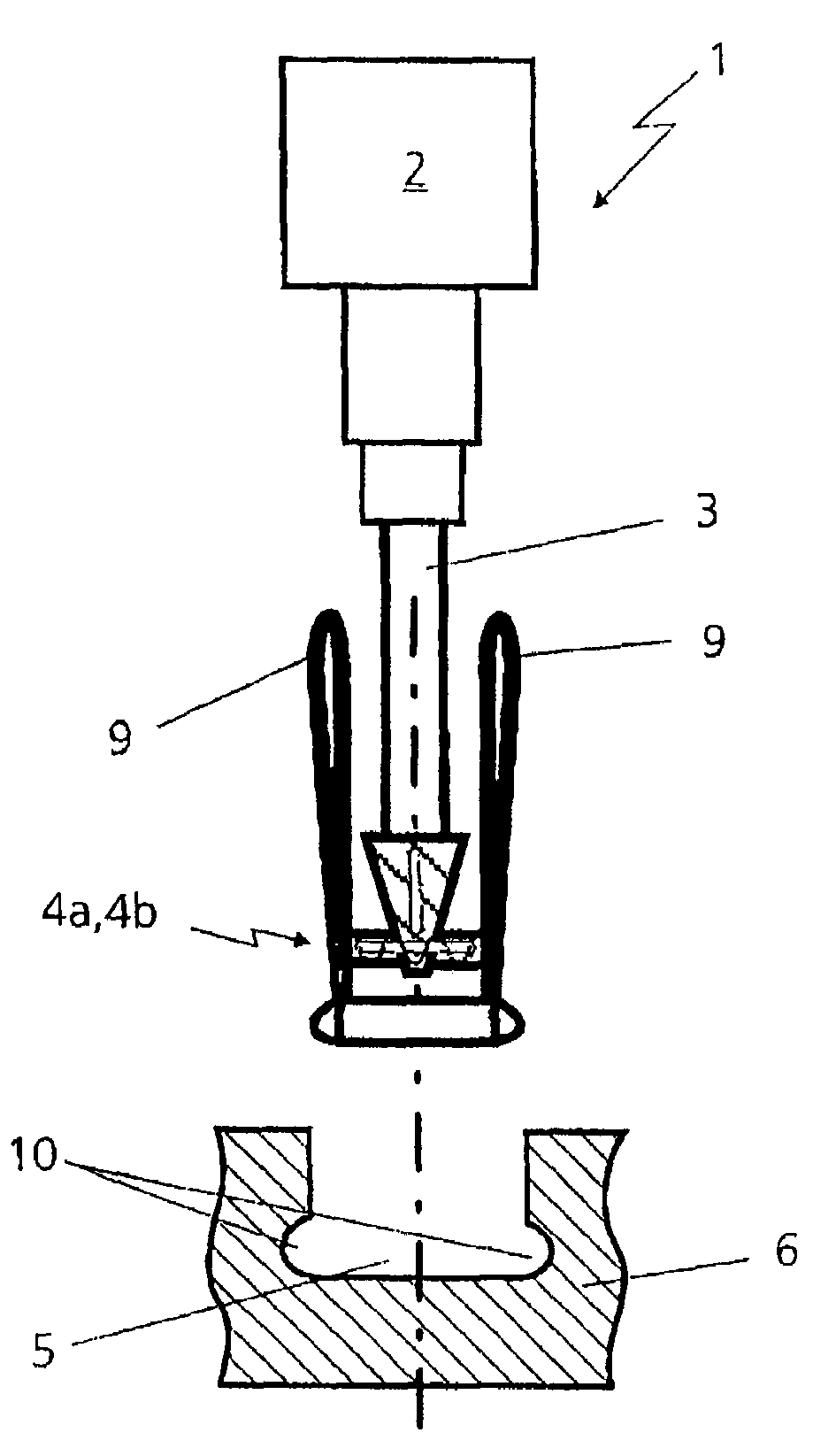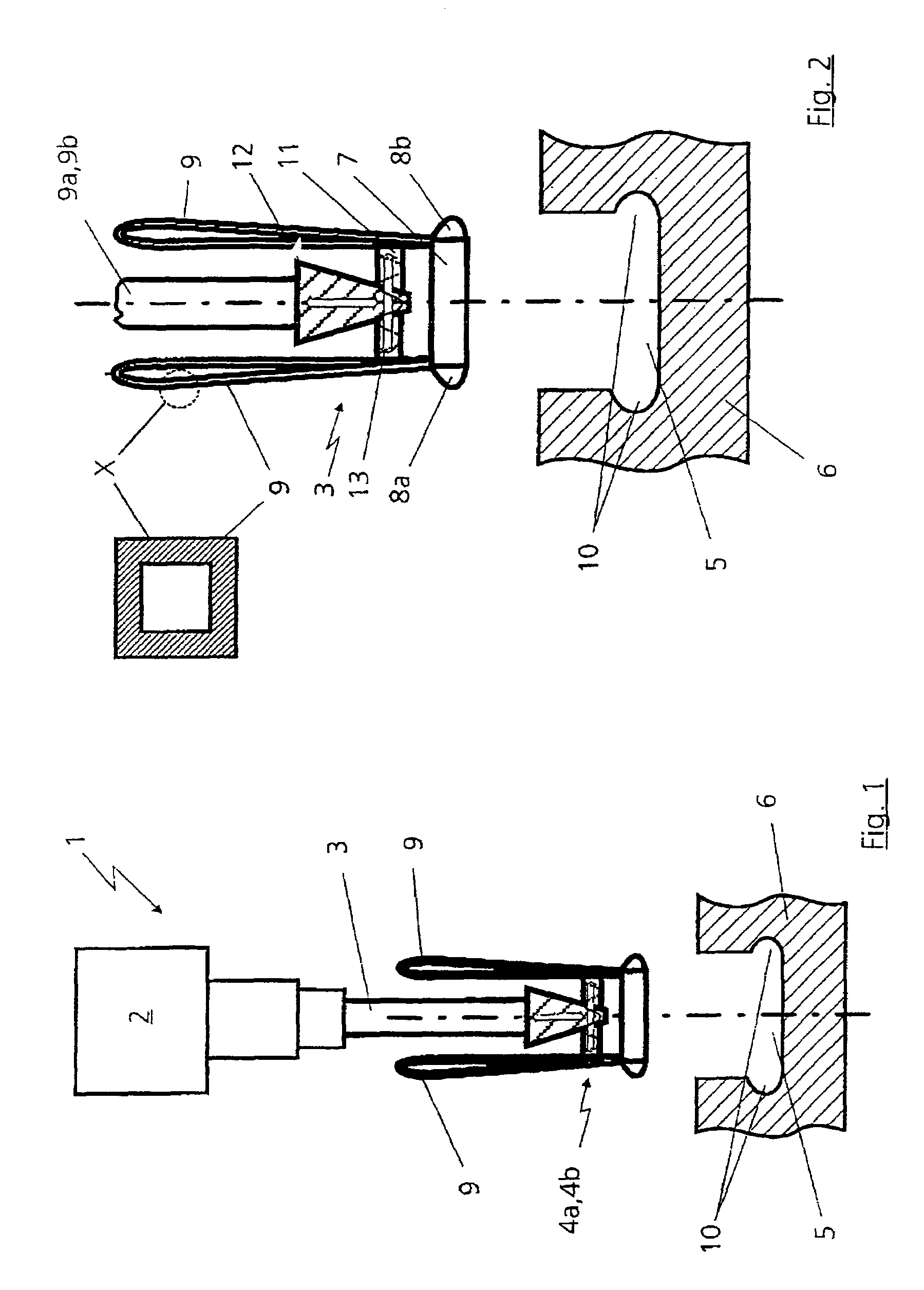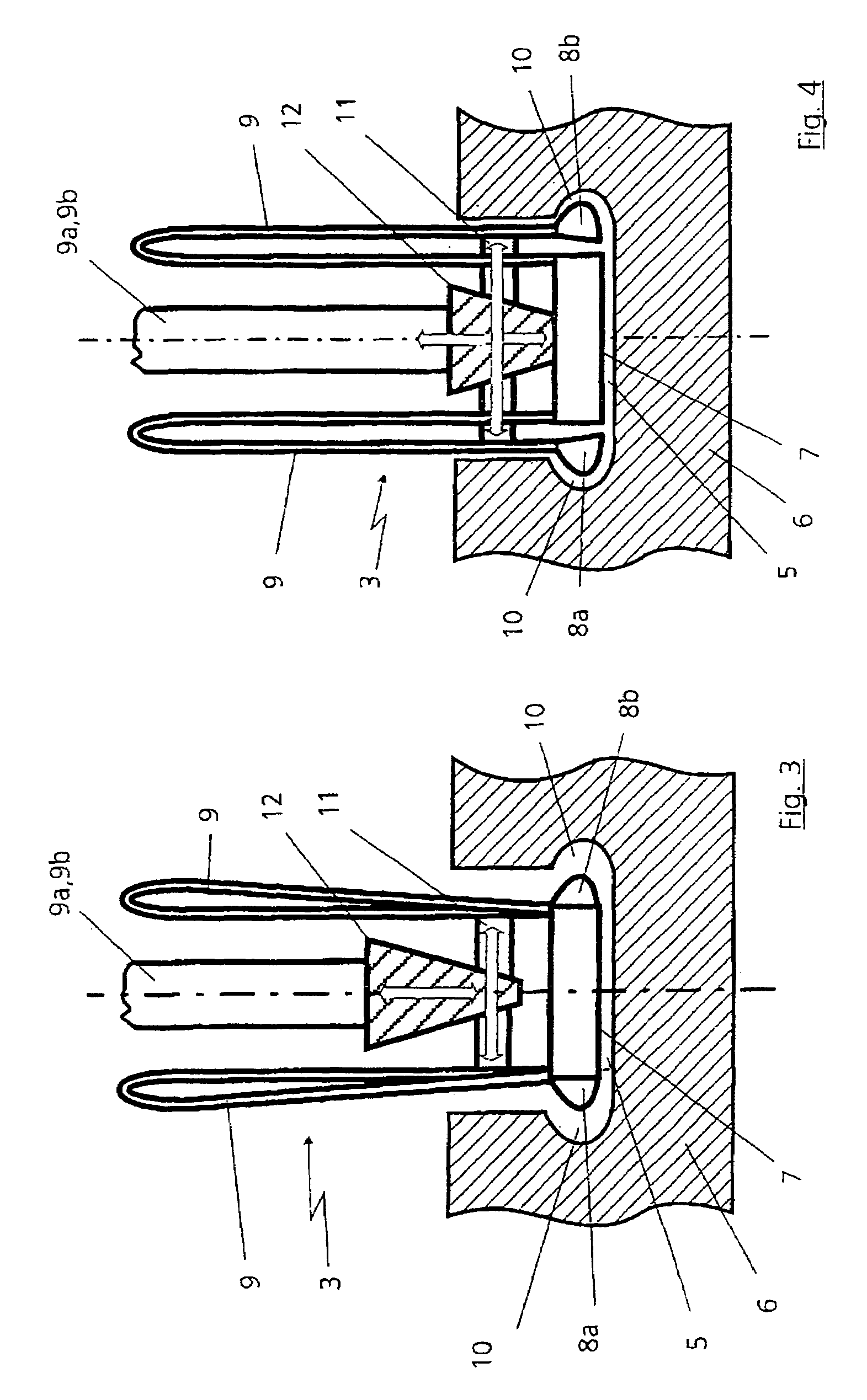Apparatus for hardening a cylindrical bearing on a shaft by means of induction heating utilizing an elastic element
a technology of elastic elements and cylindrical bearings, applied in the direction of induction heating, induction heating apparatus, furnace types, etc., can solve the problems of reducing both the design and the susceptibility to faults, and achieve the effect of reducing the outlay on the apparatus
- Summary
- Abstract
- Description
- Claims
- Application Information
AI Technical Summary
Benefits of technology
Problems solved by technology
Method used
Image
Examples
Embodiment Construction
[0022]The apparatus explained below for hardening cylindrical bearing locations on a shaft, in particular a crankshaft, is fundamentally of a known design, and consequently only those parts which are pertinent to the invention are dealt with in more detail. Reference should be made, for example, to U.S. Pat. No. 6,399,928 for details as to the structure and mode of action of a hardening process and apparatus. The hardening apparatus has a heating unit 1 with a power supply device 2 and an inductor 3, which is connected to the power supply device 2. At the lower end, the inductor has two heating conductor arms 4a and 4b, also known as heating conductor loops (cf. FIG. 6), which engage around the circumferential side of a bearing location 5 that is to be hardened on a crankshaft 6, only part of which is illustrated; they engage around less than 180 degrees of the circumferential side.
[0023]Each heating conductor arm 4a and 4b is provided with a bearing-surface hardening branch 7 and t...
PUM
| Property | Measurement | Unit |
|---|---|---|
| shape | aaaaa | aaaaa |
| axial displacement | aaaaa | aaaaa |
| mechanical | aaaaa | aaaaa |
Abstract
Description
Claims
Application Information
 Login to view more
Login to view more - R&D Engineer
- R&D Manager
- IP Professional
- Industry Leading Data Capabilities
- Powerful AI technology
- Patent DNA Extraction
Browse by: Latest US Patents, China's latest patents, Technical Efficacy Thesaurus, Application Domain, Technology Topic.
© 2024 PatSnap. All rights reserved.Legal|Privacy policy|Modern Slavery Act Transparency Statement|Sitemap



